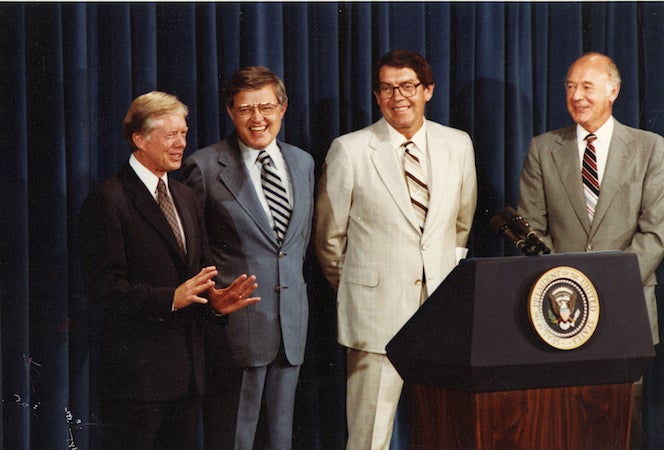
July 23, 1980 marks a milestone in American conservation.
President Jimmy Carter signed the Central Idaho Wilderness Act that created what is now known as the Frank Church—River of No Return Wilderness Area.
“The River of No Return, encompassing the Middle Fork of the Salmon River, is indeed one of our nation’s treasures,” said Carter at the signing in Washington, D.C. “This legislation, introduced, sponsored by Senator Frank Church, is the largest single contribution to the wilderness area in the lower 48 States, and I think is a major step forward toward preserving what we have as a precious treasure for this generation and for our children’s children as well.”
Congress renamed the area in 1984 in honor of Idaho Senator Frank Church shortly before his death at the age of 59. Church was a tireless champion of wild lands throughout his career. In 1964, he was floor sponsor of the National Wilderness Act and in 1968 sponsored the Wild and Scenic Rivers Act. Church also played a prominent role in establishing recreation areas including the Hells Canyon National Recreation Area and the Sawtooth Wilderness and National Recreation Area in central Idaho.
“The 40th anniversary of the Frank Church River of No Return Wilderness reminds us of the achievements of Senator Church who is considered one of Idaho’s greatest senators,” said Garry Wenske, executive director of the Frank Church Institute at Boise State. “When asked about what he was proudest in his Senate career, he said having ‘The Frank Church River of No Return Wilderness’ named for him. For those who may not know much about Senator Church, most have heard of ‘The Frank,’ which would have made him even prouder.”
Larry LaRocco served two terms in the U.S. House of Representatives, representing the Idaho’s 1st congressional district. He is a Frank Church Institute board member and former lecturer in the School of Public Service at Boise State. LaRocco was Church’s North Idaho representative in 1980 and worked on the wilderness bill with the senator. He was on the floor of the Senate when the bill passed.
“It was exhilarating because we’d worked so hard, and to see Church, the champion in action, debating the bill, explaining it. I realized how conversant he was. He was my mentor and propelled me into running for office because I saw him get things done.”
Passage of the Idaho wilderness bill was controversial, said LaRocco. Many feared its effects on the timber and mining industries.
“But Church had this vision promoted by conservationists in Idaho that this area needed protection,” said LaRocco.
Church was just months away from the election in which he would lose his seat to Republican Steve Symms.
“Some stray away from controversial issues before an election,” said LaRocco, “but Frank waded in because he saw the importance. He pushed the bill and it passed with a strong bipartisan vote in the House and Senate.”
Forty years later, said LaRocco, people enjoying the wilderness area – including the many tourists, outfitters, hunters and others who visit – may not realize how areas like it become protected.
“It’s not by executive order. Not by the antiquities act, not by the stroke of a pen. It’s hardcore legislation and work in Congress that gets these things done. And how lucky we are.”
The “Frank,” bordered to the north by the Gospel Hump Wilderness and the Selway-Bitterroot Wilderness, encompasses 2,366,757 acres. It offers a diverse landscape including ridges, canyons, meadows, glaciated peaks and a large plateau, the Chamberlain Basin, which covers 500 square miles. The area remains the largest contiguous wilderness in the Lower 48.

– By Anna Webb